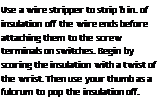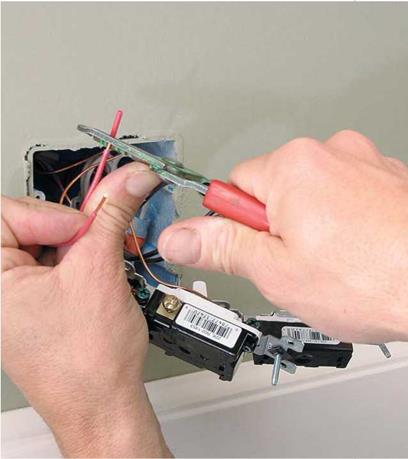Electrical Wiring


Electrical work is among the most predictable, pleasant aspects of construction—no heavy lumber to be wrestled, no large sheets that would fit if only your fingers weren’t in the way, no quick-drying compounds driving you into a frenzy. Wiring a house is methodical work that requires attention to detail and some dexterity. And you know quickly if you’ve done the work correctly: bulbs glow and radios play.
Electricity should be respected, and it must be taken seriously. But it is a natural phenomenon, subject to the laws of physics. If you heed the safety precautions in this chapter—especially those about shutting off power and testing with a voltage tester, to make sure the power is off— you’ll do fine. If you’re new to wiring, take the time to read the whole chapter because important information is not necessarily repeated.
It’s imperative that you check with local building code authorities even before buying tools and materials. Although most building authorities do not forbid an owner’s doing his or her own electrical work, most require inspections when the system is roughed in—that is, before wires are connected to switches, receptacles, and so on. Besides, building inspectors are usually knowledgeable: They can tell you if local codes conform to the National Electrical Code® (NEC) or, if not, how they vary.
If this chapter whets your appetite for more, get copies of
Rex Cauldwell’s Wiring a House (The Taunton Press) and Redwood Kardon, Doug Hansen, and Mike Casey’s Code Check® Electrical (The Taunton Press).
Electricity is tricky to describe. A physicist might call it "the movement of electrons,” but most people find it easier to visualize electricity as something like water flowing through a hose. Using that analogy, here are two useful concepts:
(1) Electrical current flows in a circle, making a circuit, and (2) it flows most easily along paths of least resistance, but it will follow any path that’s available. . . including you!






Leave a reply